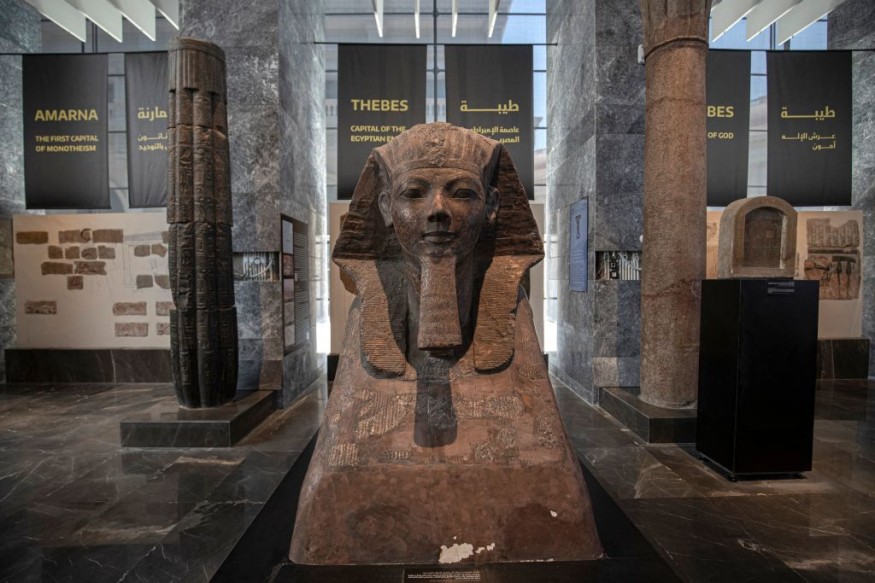Archaeologists discovered a sphinx monument whose face may reflect the Roman emperor Claudius while excavating an ancient temple in Egypt, according to a statement issued by the Egyptian Ministry of Tourism and Antiquities on March 6.
However, some researchers who were not part of the study are not confident that the sphinx-like structure looks like Claudius. From 41-54 A.D., the Roman Empire ruled ancient Egypt and it might be that Claudius visited the country and was given the honor of being represented in a statue. Claudius is well-known for invading Britain and for being poisoned to death by his wife, Agrippina.

Mini Sphinx With Smiley Face, Dimpled Cheeks
Archaeology professor Mamdouh Eldamaty from Ain Shams University in Egypt and a former minister of antiquities said in the statement that the beautifully and perfectly sculpted sphinx was unearthed near the Hathor Temple, one of Egypt's best-preserved ancient structures.
According to the statement, the basin was discovered on a limestone platform and dates to roughly 500 years after Claudius' rule. It's unclear why the statue was placed there.
The sphinx's smiling face evidently has a dimple, and some yellow and red colors can still be seen. The team compared the mini sphinx with surviving depictions of Roman emperors and found that it closely resembles Claudius.
As per AP News, archaeologists will conduct additional research on the markings on the stone slab, which could reveal more information about the statue's identity and the area. The statue is much smaller than the famous Great Sphinx of Giza complex, which stands 66 feet (20 meters) tall.
A Roman-era stone slab with demotic and hieroglyphic inscriptions was also discovered during the excavation. The ministry said that the limestone shrine features a two-tiered platform and a Byzantine-era mud-brick basin.
The Egyptian government regularly publicizes such findings in the hopes of luring more visitors, who are a vital source of foreign currency for the cash-strapped North African country.
Does It Look Like Roman Emperor Claudius?
Egyptian, Persian, and Greek mythologies often mention sphinxes, and their likenesses are often found near tombs or religious buildings. Therefore, it is not unusual for sphinx statues to be found in Egypt. The most famous Great Sphinx of Giza from 2000 BC even represents the ancient Egyptian Pharaoh Khafre.
However, scholars who were not part of the research said that they could not be certain whether the recently found mini sphinx looks like the face of Roman emperor Claudius based on the released images.
Associate professor of art history at Emory University in Atlanta told Live Science in an email that the photos are a little small to confirm if it is indeed Claudius or not.
More so, other scholars gave similar assessments and said that they find it impossible to make any conclusion regarding the resemblance of the ancient artifact. Some also said that they do not even know the face of Claudius.
But if the sphinx statue is indeed a representation of Claudius, then it would not be the only time that a Roman emperor was treated like Egyptian royalty. A carving was also discovered in 2014 that depicts Claudius as a pharaoh at the Temple of Isis at Shenhur. For now, the ministry said that excavations at the site and analysis of the artifacts are ongoing.
RELATED ARTICLE: Life-sized Statue of Roman Emperor Posing as Hercules Was Discovered, Implying There Could Be More Hidden Remains To Be Found
Check out more news and information on Archaeology in Science Times.
© 2025 ScienceTimes.com All rights reserved. Do not reproduce without permission. The window to the world of Science Times.










